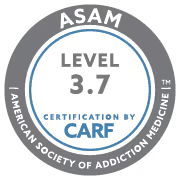This blog post will explore the many benefits of yoga, how yoga can help improve healing, and how it can strengthen the body. We will also look at some scientific evidence that supports the use of yoga during rehabilitation. If you are looking for an alternative method to improve your healing process, or if you are just interested in learning more about the benefits of yoga, then this blog post is for you!
1.Chemical Dependency
Yoga can be an essential part of the rehabilitation process for people recovering from substance abuse and mental health disorders” (para. Yoga). Yoga can help reduce stress, anxiety, and depression; it can also help improve sleep quality. In addition, yoga can help to increase self-awareness and self-esteem, which are essential factors in the recovery process and developing a self-care routine.
2. Harm-Reduction Approach
Yoga can also be used as a harm-reduction approach for people who are struggling with substance abuse. Harm reduction aims to reduce the negative consequences of drug use while still allowing people to live their lives. Yoga can help to reduce the risk of overdose and other health complications associated with substance abuse. In addition, yoga can help people to cope with withdrawal symptoms and cravings. A growing body of scientific evidence supports the use of yoga during rehabilitation. Yoga has improved physical function, mental wellbeing, and quality of life in various populations. In addition, yoga is an effective intervention for pain relief.
3. Affirmation
One of the most important things you can do during rehabilitation is to focus on positive affirmations. Positive affirmations are statements you say to yourself designed to increase self-confidence and self-esteem. Yoga helps the mind and body alike by developing mental health benefits, as well as being a form of exercise. Some examples of positive affirmations include “I am strong,” “I am worthy,” and “I am capable.” Saying these affirmations to yourself daily can help to increase your overall sense of wellbeing. There are many different types of yoga, so it is essential to find a style that suits your needs and interests.
4. Guilt-free Treatment
Yoga provides a low-impact exercise that is gentle on the body and can be done by people of all ages and abilities. This makes it easier for beginners and older adults to get accustomed to a regular exercise program. It is also an effective way to combat the adverse effects of stress, which can worsen pain and impede healing. Yoga is known to reduce blood pressure, heart rate, and increase cardiovascular strength. One of the benefits of yoga is being a form of low intensity exercise. Regular yoga practice can be done in short bursts throughout the day, making it a convenient and guilt-free form of exercise.
5. Flashing Harmful Substances
Yoga is an effective intervention for various populations, including people recovering from substance abuse. In one study, yoga was found to be more effective than traditional exercise in reducing the cravings and withdrawal symptoms associated with quitting smoking. Yoga can also help minimize relapse risk by teaching people healthy coping mechanisms. Since yoga helps develop body awareness, regular routines can serve as a form of wellness and self-care.
6. Supportive Lasting Treatment
Yoga is an effective exercise for people with pain conditions, such as trauma and illness. A study conducted by the University of Pennsylvania found that people with arthritis who practiced yoga had less pain and more physical function than those who did not practice yoga. Another study showed that people with chronic low back pain who practiced yoga had less soreness and disability than those who did not practice yoga. These studies suggest that yoga can be a supportive and lasting treatment for chronic pain. Physical posture and body weight are all things that can be maintained through regular yoga practiced This is great for older adults who need both regular physical activity and be able to have minimum soreness.
7. Improved Healing
Yoga can also help speed up the healing process after an injury. A study conducted by the American Journal of Occupational Therapy found that people who practiced yoga as a form of physical therapy had a faster recovery from shoulder surgery than those who did not practice yoga. The study showed that people who practiced yoga had reduced soreness, a better range of motion, less swelling, and overall better blood flow. Yoga can also help reduce the risk of re-injury by helping to improve flexibility and strength. This has the same effect for recovery from addiction as well.
8. A Stronger Body
In addition to improved healing, yoga can help strengthen the body. Yoga as a strength training exercise allows the muscle to develop at a lower intensity. A study conducted by the Journal of Strength and Conditioning Research found that people who practiced yoga had better muscle strength and endurance than those who did not practice yoga. The study showed that people who practiced yoga had a better mind-body connection, leading to improved performance in other activities. In addition to improved healing, yoga can also help strengthen the musculoskeletal system. A study conducted by the University of Washington found that people who practiced yoga had better muscle strength and endurance than those who did not. It is an excellent option if you are looking for an effective and safe exercise to help with your rehabilitation. It has been shown to improve healing and reduce pain and can be done in short bursts throughout the day. Yoga is also a supportive and lasting treatment for severe addiction conditions. So if you are looking for an alternative method to improve your healing process, a yoga class is worth considering.












